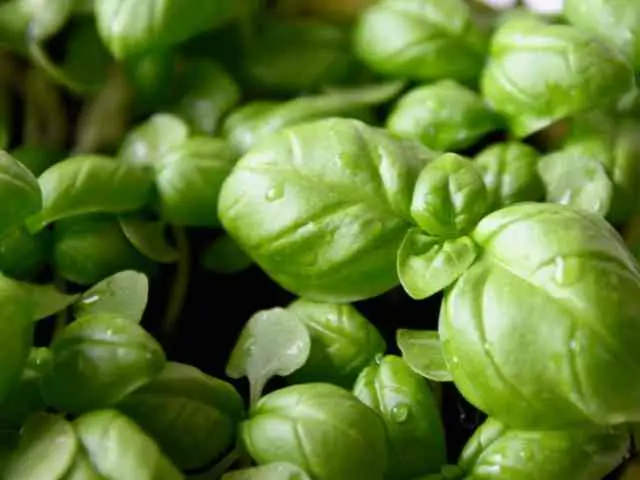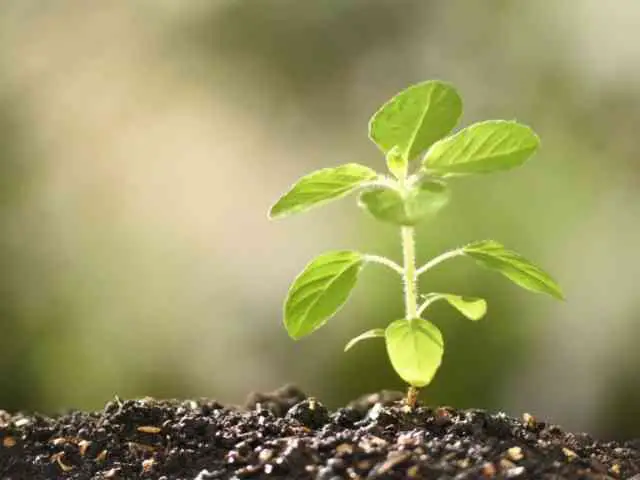When you know all the keys to success, growing basil from seed is a cinch, and here’s your success. Find out how long basil seeds germinate in this article.
There are various basil kinds that I cultivate every year in my yard. It may seem to be difficult to cultivate from seed, but it’s rather simple!
Reader Poll: What online courses would interest you?
Every step of the process is covered here, including how long does it take basil seeds for them to sprout! As well as how and when to get started.

Growing Basil From Seed
As soon as you understand how to cultivate seeds, you may start any type you like! You may use this approach to grow basil from any sort of seed.
Seeds You Should Use to Grow Basil Plants
Growing basil from seed is simple, and there are several types to choose from. Genovese, lemon basil, Italian big leaf, Thai basil, and purple leaf are a few of my favorite types of basil.
Subscribe to our newsletter!
The seed-planting instructions are the same for all kinds, regardless of color or taste.
The fact that you can produce basil from seed is accurate, but there are several things you can do to guarantee that your seeds germinate.
Planting Preparations
Nothing unusual is required before sowing basil seeds. However, soaking them overnight in warm water can give them a head start and speed up germination.
The Basil Seed Planting Technique
Fortunately, you don’t need a lot of expensive equipment to start a basil seedling. If you’ve ever done seed starting before, you probably already have all the supplies you’ll need to get started.
Fill The Trays With Soil
Fill the seed starting medium to the brim in the planting cells. Your trays may be filled with seeds or seed pellets.
Estimate How Many Seeds To Plant
It’s important to know how many seeds to place in each hole if you’re using old seeds with poor germination rates. If your seeds are in good condition, you may plant one seed per cell/pellet if you choose.
Sow The Seeds
It’s simpler to spread the seeds on top of the soil and then gently move them into the ground. Alternatively, if you’d like, you may just build a shallow hole and then drop them in.
Add Dirt To The Seeds
To get the seeds down into the soil, gently push down on them or use your finger to take them into the ground. The seeds of basil are so little that they need only be buried about 1/4 of an inch deep.
To Complete The Seed Trays, Add Water
You shouldn’t attempt to water your flats by pouring water over the top since the seedlings are so little and delicate.
If you do that, the seeds will most likely be displaced. Soak the soil in a tray by pouring water on top and letting it soak in from the bottom. After 20 minutes, discard any water that has not been absorbed.
Wrap The Trays With Plastic
Keep the seedling tray’s soil wet and warm by covering it with a plastic lid.

Time For Basil Growth
It’s rather easy for basil seeds to germinate under the appropriate circumstances. Most seedlings germinate in 5 to 10 days. However, at times they might be much slower.
If you are taking an eternity, it may be too chilly for them. Use a seedling heat pad to expedite the germination process since they need warm soil.
Do You Know What A Sprout Of Basil Looks Like?
As soon as the plant’s seedlings emerge, they are known as “seed leaves” (aka cotyledons). Both sides of the stem have what seem to be two half-circles protruding from it. This refers to the second set of leaves, as well as all the ones that follow.
To my eyes, the real leaves resemble small baby basil leaves. Within a few days of the seed leaves opening, they normally begin to sprout roots.
Seedlings Of Basil May Be Transplanted Into Your Garden
During the spring, everyone is eager to bring their seedlings outdoors and enjoy the fresh air. Making them garden-ready is a delicate procedure, to be sure.
Growing basil from seed is time-consuming, and if you don’t do it correctly, you might lose all of your hard work. Don’t let that happen to you by following these transplanting guidelines.
When Should You Transplant?
Make sure you wait until both the weather and the soil have warmed up before transplanting your basil seedlings into the garden in the spring.
Planting later in the spring is preferable to transplanting too early and losing your seedlings to a late frost. Basil seedlings will be stunted if the soil is too chilly.
- Fixing Up
Getting them habituated to live outdoors is a prerequisite to transplanting them. Basil seedlings that have been cultivated inside cannot be transplanted immediately into the garden, since they will likely perish from shock.
Don’t be tempted to skip this step if you want to get the most out of them! Spend at least two weeks gradually preparing them for life outside the home.
To begin, keep them in a shaded, safe area for a few hours each day. After that, gradually increase the amount of time they are exposed to the sun and gradually increase the amount of time they are outdoors. They’ll be ready to go into the garden after they’ve become acclimated to being exposed to the light all day long..”
How Deep Should A Plant Be Installed?
You may put basil seedlings a little deeper than they were in their containers. Plant them just deep enough so that their delicate roots are entirely covered, but not so deep that they will drown.
How Long It Takes To Collect Basil From The Seeds?
You don’t have to wait for the fruit to mature since we eat the leaves, so you can pick them whenever you want. To encourage bushier growth, nip the tips off often.
If you remove all of the plant’s leaves, it may not be able to live. If your basil begins to bolt, just clip off the blooms to maintain it throughout the summer.
Conclusion
For a seed to grow, precise conditions must be met while planting it. If you’re beginning seedlings inside, be sure to use good starter soil and give them plenty of room to spread their roots. It is best to start inside six to eight weeks before you want to plant them outside, but be sure to read the growth instructions carefully since some plants develop much quicker than others.

